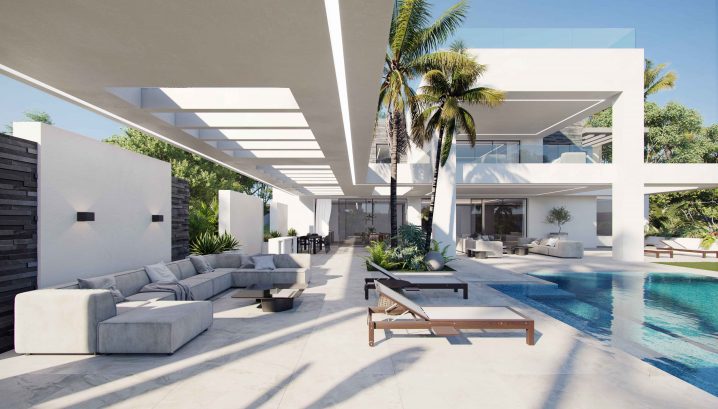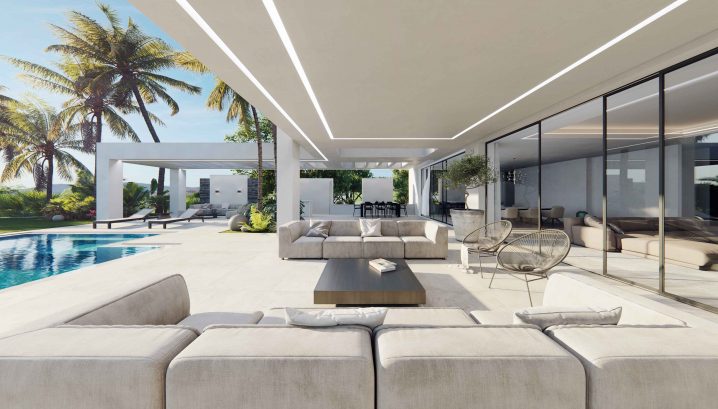People have been using visual images to communicate their ideas since the beginning of times. Pictures still help humans spread important messages, but now, they are more complicated than the cave painting. 3D visualization enables architects not only to create an object but also put it in context so that when people look at it, they see more than the object itself. They visualize the whole story behind it, and ultimately, what they buy from you is not a property but a positive experience they want to have living there.
Does that mean that you as an architect can influence other people’s emotions?

Hell yes!
In fact, this is something you should be doing because the truth with customers is that they don’t know what they want until you show it to them. Don’t sit around waiting for a person to come to your office seeking something that looks exactly like that perfect building you designed a few years ago. That’s not going to happen. Instead, show people the possibilities by telling engaging stories in 3D.
Like most good things in life, a top-notch architectural design is all about the details. In this post, we’ll discuss a few practical ways of how you can use the power of CGI to communicate the idea behind your project and make the viewers see all the benefits. Keep reading!
How to implement visual storytelling in architecture?
The two essential things that can help you tell a great story by means of 3D visualization are details and context. Let’s talk about the ways you could utilize both to present your projects.

Use details to alter perception
- 3D Animation
Visual stories are always better remembered when told in motion. You don’t have to go over the top and develop an animated tour or a fly-through for every house you design. However, if there’s a choice between a static presentation and a 360-degree view, it’s certainly better to go for the last one. Even a simple interactive slideshow will bring better results than a static presentation.
- Organic Decor
Adornment is crucial in visual stories because it sets the mood and gives projects more realistic feel. Change decor and you’ll change the story. Take off the details like a wall painting, area rugs, or warm lightning, and bam, you’re not in a comfortable suburban mansion anymore. There are the entire visual libraries with 3D decor details that can be used to set the right mood for a place. And the good news is that customers can always replace things they don’t like.
- Close-ups
One of the biggest advantages of high-quality 3D rendering over 2D visualization is the possibility to refine objects to the smallest details. CGI allows you to visualize texture on a microscopic level, which allows architects to show close-ups and demonstrate objects from various angles during the presentation. This possibility is huge for the client as it serves as proof that the product is of a high quality.

Adjust context to get across to viewers
- Experiences over things
As we’ve already mentioned, clients don’t buy physical objects, they buy emotions and potential experiences. 3D visualization can show people the real value of what they’re about to buy, and that’s why it’s so useful. Knowing your customer and doing 3D rendering with the latter in mind should become a priority. The more personalized the model will be, the bigger the chances that the viewer will buy it.
- Time and weather
Time of the day and weather add to an overall mood of the visualization. Luckily, 3D rendering software makes it really easy to put the place in various environments. Demonstrate the exterior at different times of the day, show your client how the place will look in summer and winter. This will make your project seem real.
- Customizable context
When it comes to architectural design, people love to have a choice. 3D visualization provides them with a huge variety of textures, colors, and shapes. On top of that, it lets people change the scenarios. A table can be made of wood, stone, glass, metal. One can move it to the kitchen from a living room. One can take down the kitchen wall and make it a studio. With 3D visualization, nothing is impossible.
Overall, 3D visualization is a very powerful instrument that can virtually take your customer into the future. Use interactive details and place your project in context so that you could give the viewers more than a nice picture of the exterior. You’ll show them what their life might look like in the near future if they make the right conclusion and decide to buy from you.
Visual stories are powerful, you can try to tell them in 2D, but they won’t be so good. If you don’t use the advantages of 3D rendering yet, think about all the great things it can do for your business. Hire 3D visualization professionals and boost your sales.

